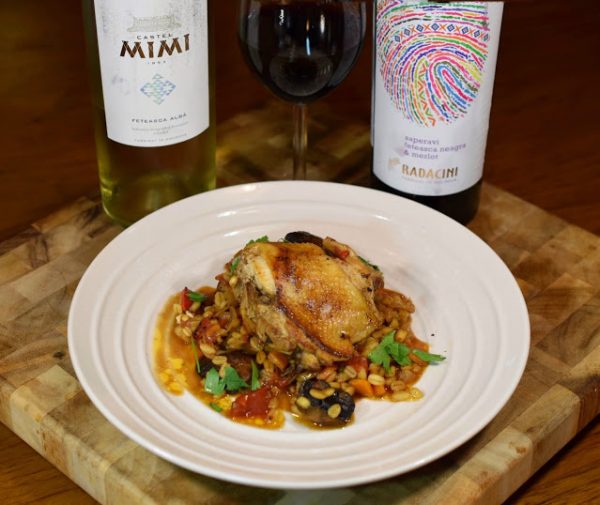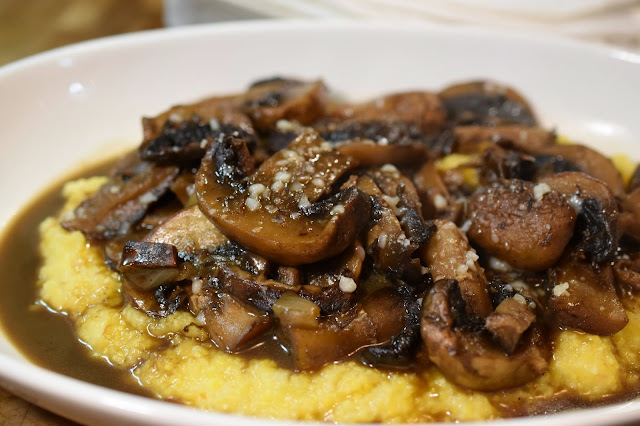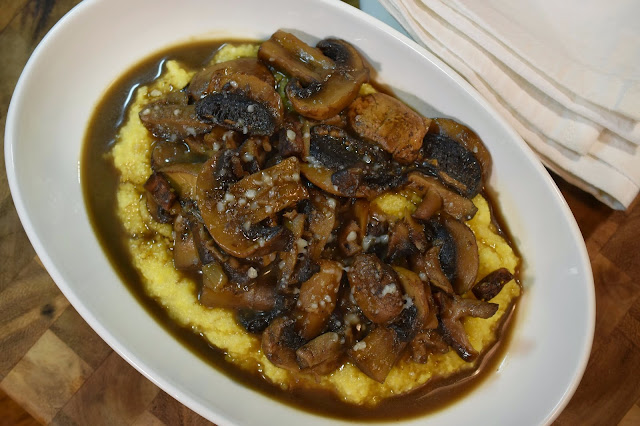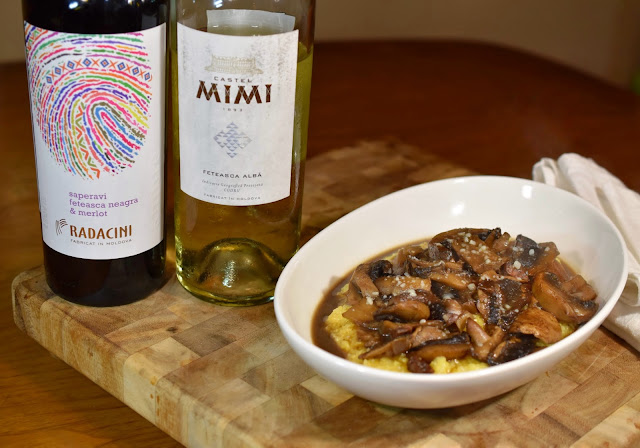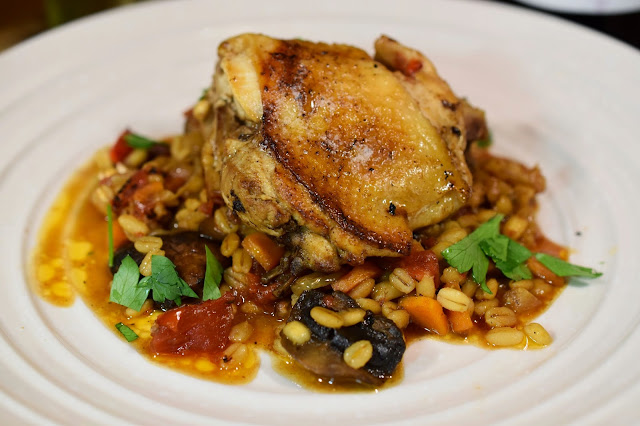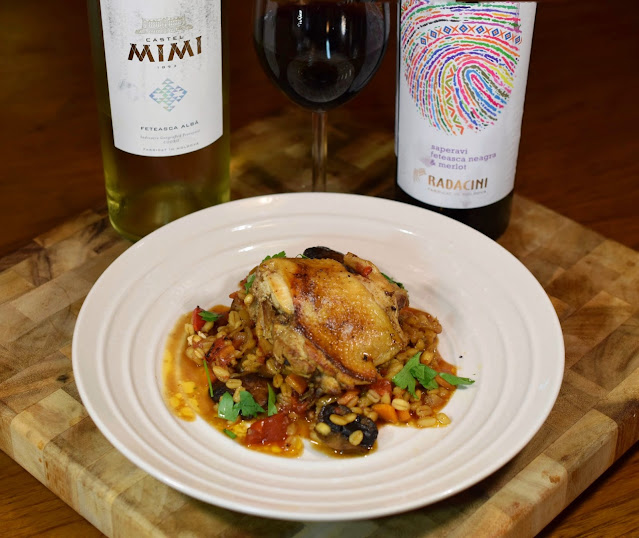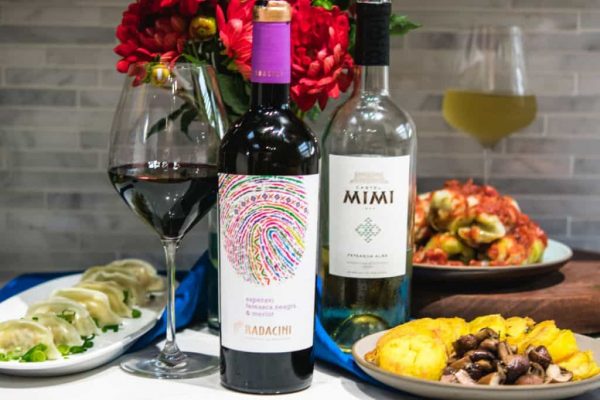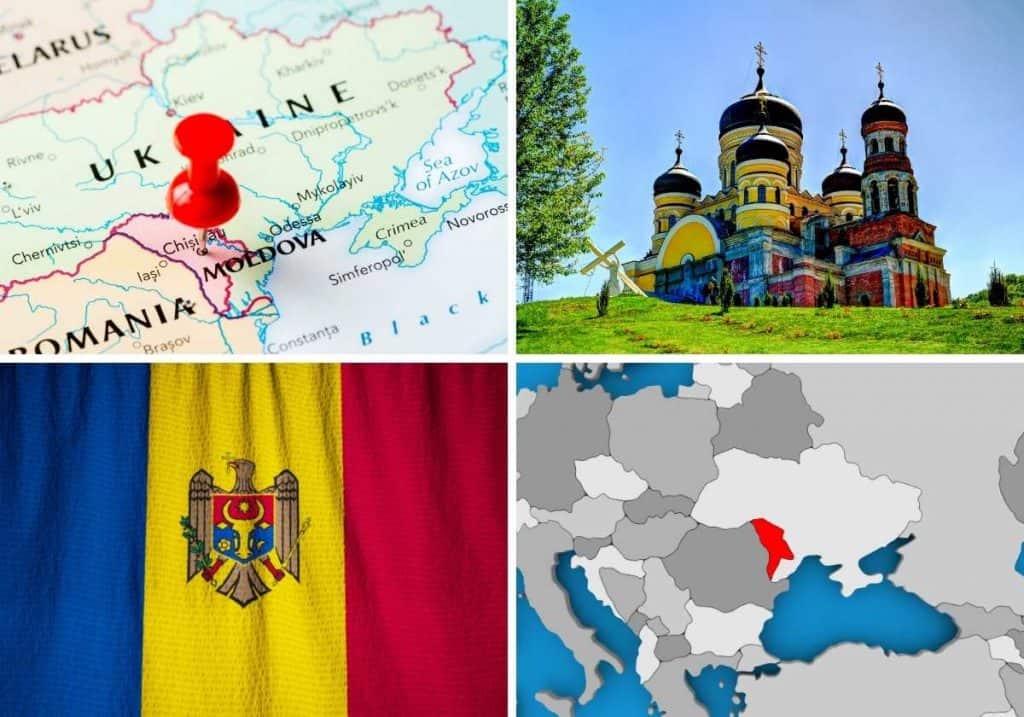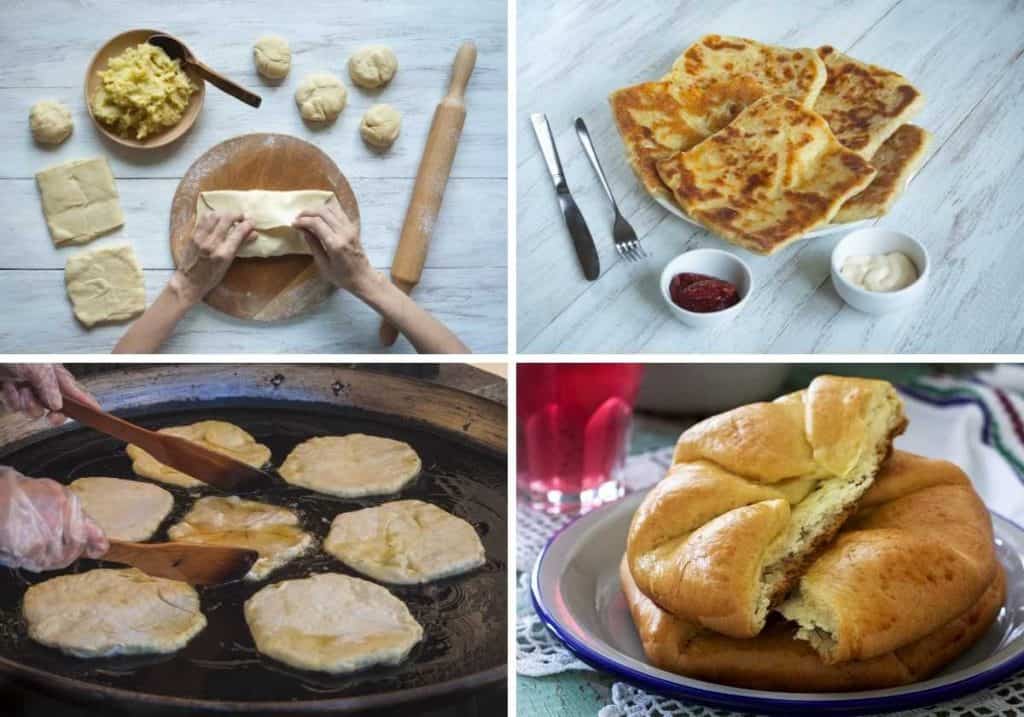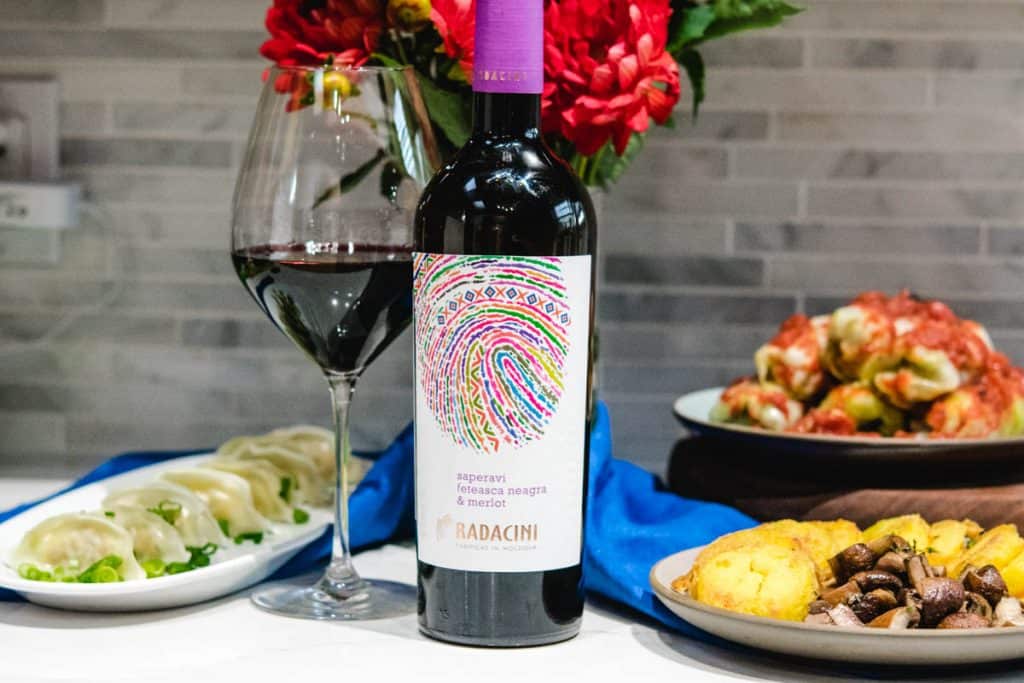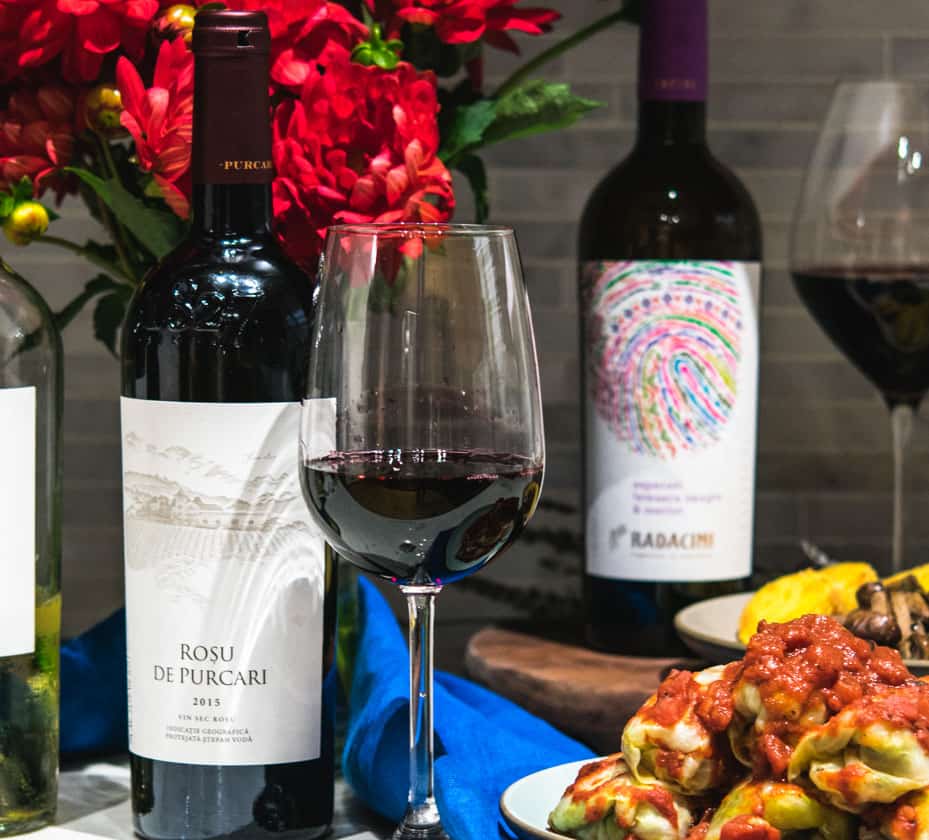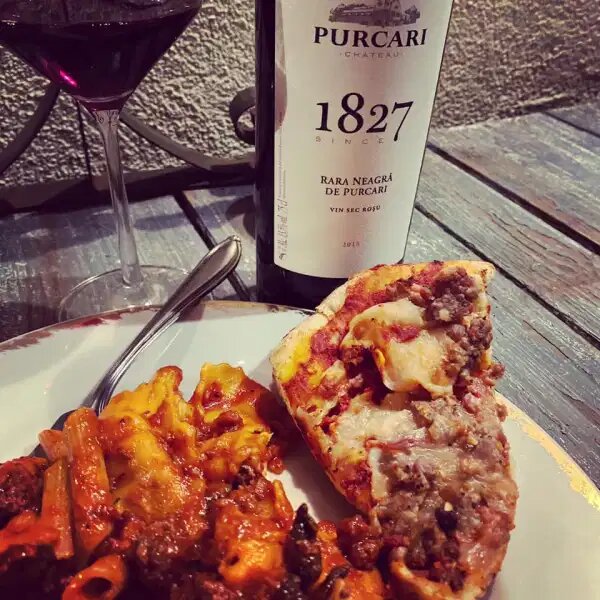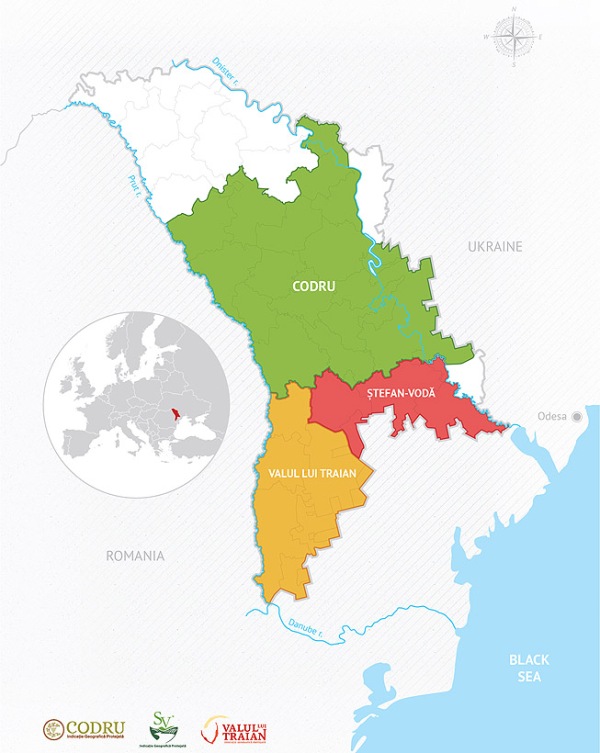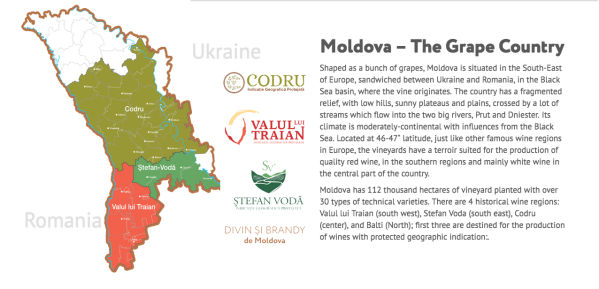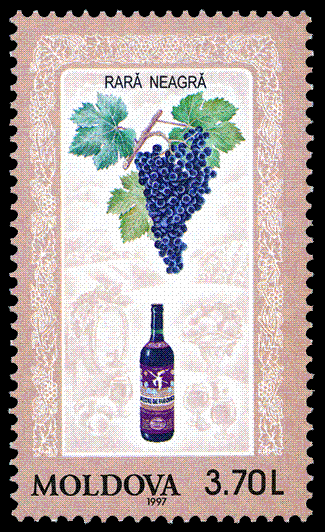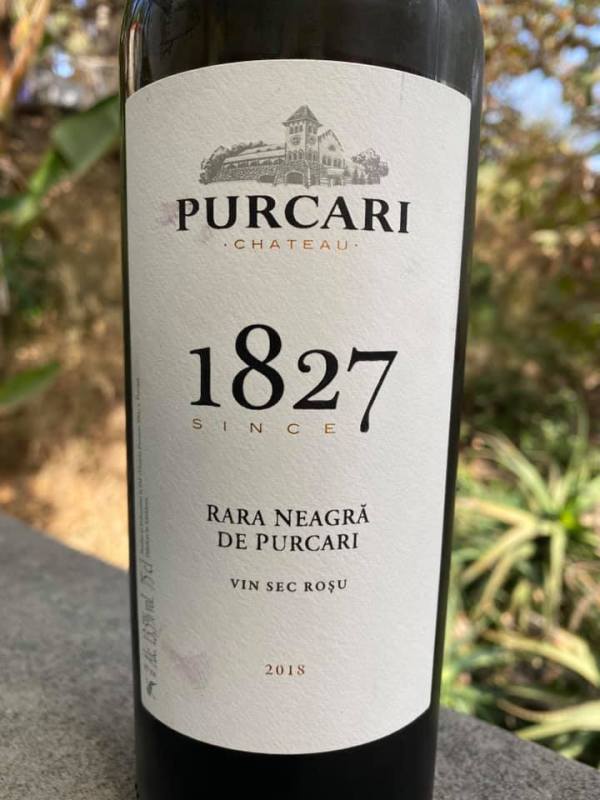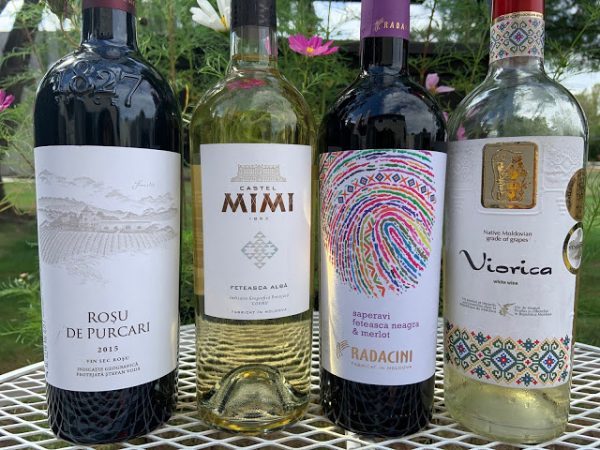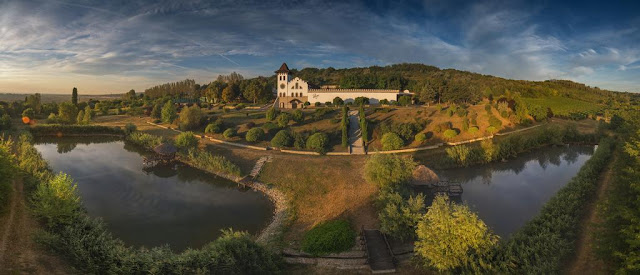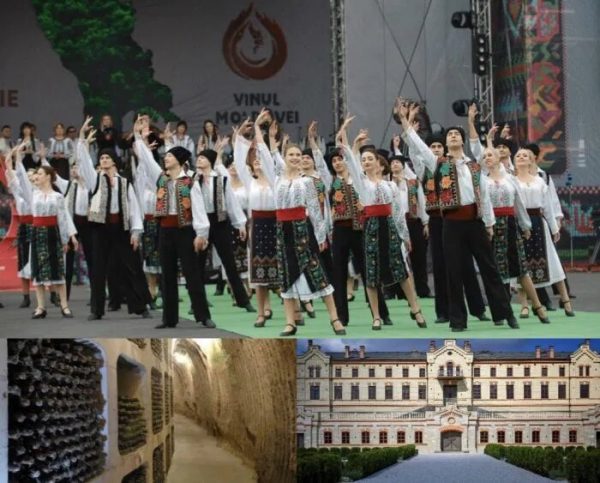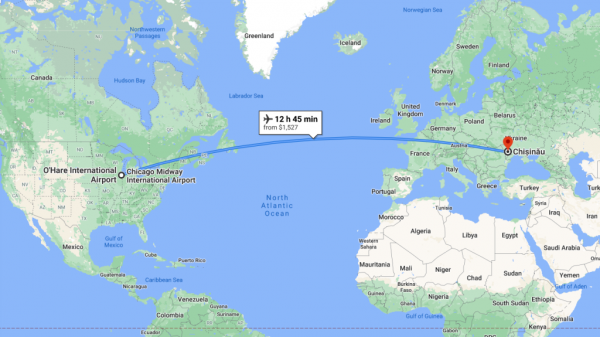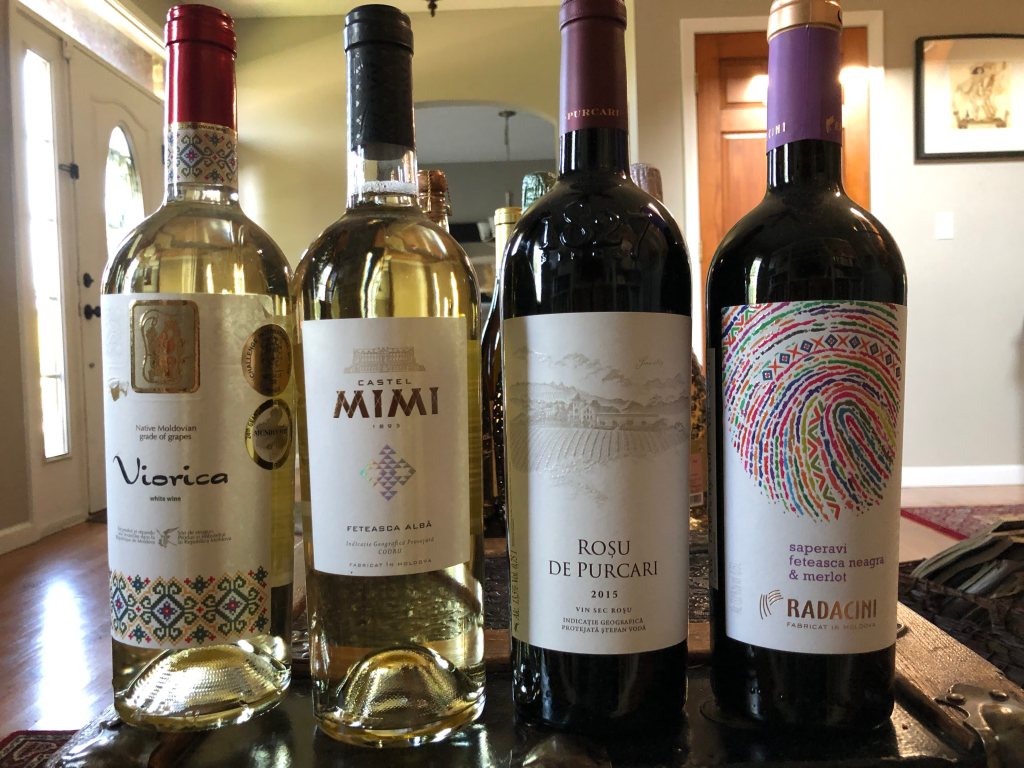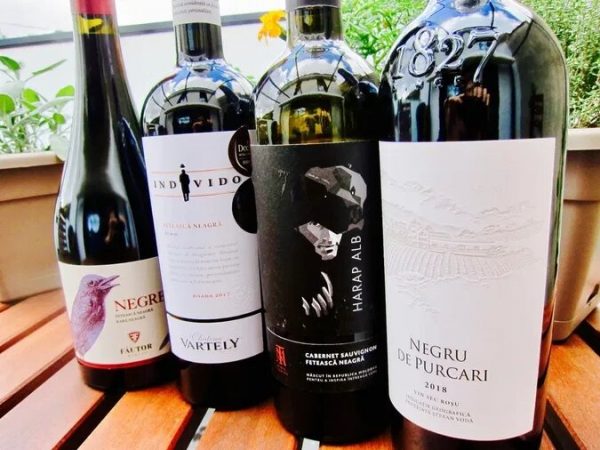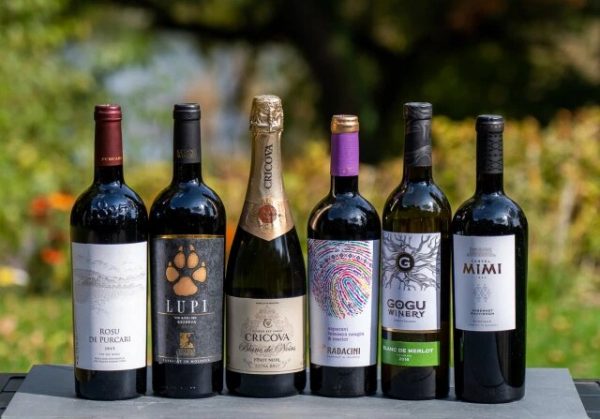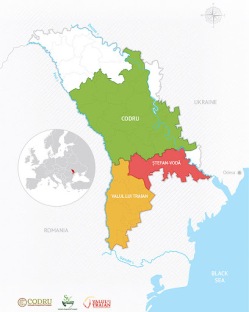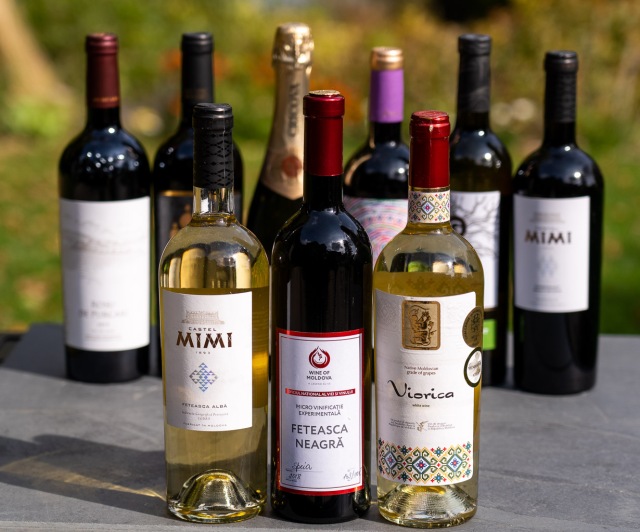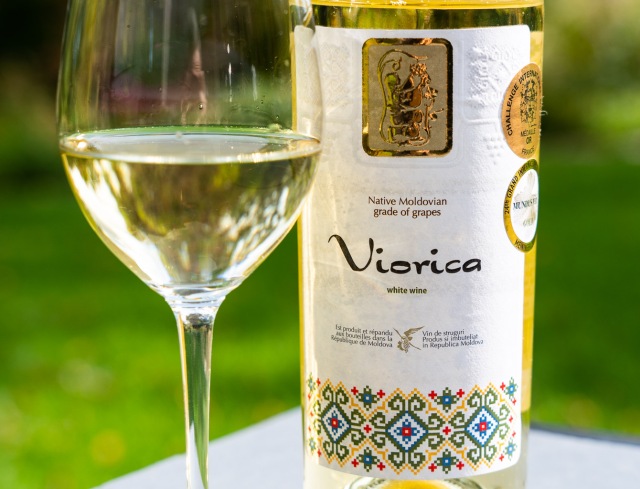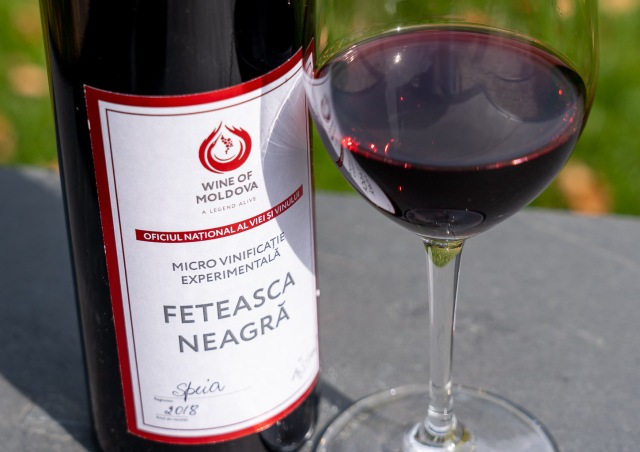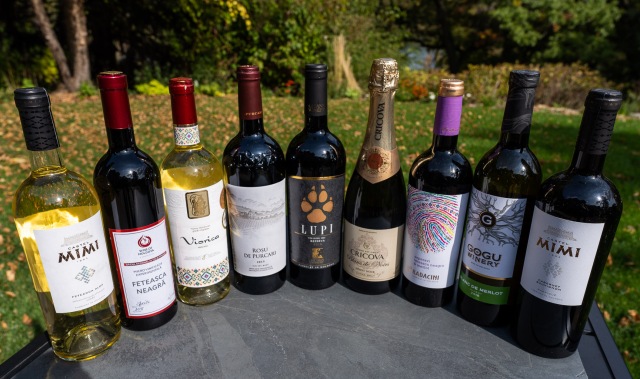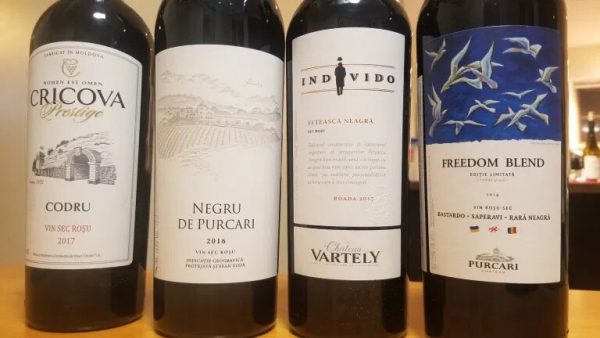Celebrating Moldova National Wine Day with More Food and Wine Explorations
Daria 2020-10-30T16:08:57-04:00Earlier this year I got the chance to explore the wines of Moldova for the first time. It was a lot of fun trying new grapes and dishes I loved. This weekend marked Moldova National Wine Day (Oct 3rd and 4th this year) and I had the chance to celebrate at home with a few more wines from this Eastern European country.
| Photo courtesy of Wine of Moldova. A national wine day celebration on a typical year. This year, of course, celebrations will be held at home. |
I decided to choose two new recipes and try them with two of the bottles I received as samples. For more background on Moldova and its wine history, I invite you to check out my post from earlier this year, so that we can just get right down the wine and food today.
 |
| Photo courtesy of Wine of Moldova. |
Note: These bottles in today’s post were received as samples. No other compensation was received and all opinions are my own.
THE GRAPES
There are few grapes in these wines you might not recognize –– the first two are new to me too –– so let’s get to know them real quick.
Feteasca Alba
This variety has been cultivated for centuries in this region and appears to be a very ancient grape. It makes fine, delicate wines with floral aromas with stone fruit and tropical notes with a fairly light body. It’s used to make sparkling, dry, and sweet wines. This is one of three “maiden” grapes, as that’s the meaning of the word Feteasca. Feteasca Alba is the “white maiden.” (It’s also one of the parents of Feteasca Regal, the “royal maiden,” which we got to know last time.)
Feteasca Neagra
The third maiden in the trio is the Black Maiden. It’s over 2000 years old and probably originated around the Prut river valley in southwestern Moldova. It is capable of producing high-quality reds, with typical aromas of wild cherry and violets, concentrated berry fruit, and good structure. It can be found in dry, semi-dry, and sweet styles. This grape also has lots of anthocyanins, which are antioxidants, which basically makes this health food of course.
Saperavi
Saperavi is a dark-skinned, pink-fleshed grape variety originally from Georgia (the country) and its been gaining in popularity here for the last few years. It’s a teinturier grape, which means that the juice and flesh are also tinted red in addition to the skin – which is pretty rare. It does well and is grown throughout Eastern Europe. You can probably guess that it has lots of color, it’s also got lots of acidity and tannin. You expect flavors of dark berries, cherries, smoke, leather, spices, and tobacco.
THE WINES
I opened one white bottle and one red to try this weekend with two dishes selected.
Castel Mimi Feteasca Alba Codru 2018
Blend: 100% Feteasca Alba | $18.99 | 13.% Alc
Castel Mimi was founded in 1893 by Constantin Mimi, a politician who went on to dedicate his life to wine. He decided to apply what he’d learned of winemaking on his travels through Western Europe, planted vine cuttings at his own estate near the village of Bulboaca, and thus created the first chateau in Moldova. In 1940 Castel Mimi became state property and was later turned into an industrial wine factory during Soviet rule. While the wine factory remained in use and was expanded, the chateau was largely inactive for fifty years. However, in 2011 an ambitious restoration project was launched to renovate the mansion and its original facade has now been completely restored. The winery’s tourist area is open to guests and includes a royal courtyard with gardens, a grand square with dancing fountains, an events hall, a spa, a swimming pool, and a a summer terrace and picnic areas. You can even stay overnight in one of seven chalet-style cottages.
Tasting note: White peach, lots of blooming flowers, light fresh herbs, and a mix of lemon and grapefruit hit on the nose and continued on the palate. The wine’s texture was light, but round in the middle, following through to a crisp finish accented by light minerality and bright acidity.
Radacini Ampre Saperavi, Feteasca Neagra, Merlot 2018
Blend: 70% Saperavi, 20% Feteasca Neagra, 10% Merlot | $19.99 | 13% Alc.
Sadly, I couldn’t find out much about Radacini other than that it’s a about a decade old.
Tasting notes: Warm fruit sauce of spiced cherries, raspberries, and plums hit on the nose with a touch of cinnamon. The warmth is still there on the palate, but it’s combined with more tart notes of sour cherry and pomegranates mixed with a little tobacco and tea leaf. It was medium-bodied, with lots of acidity, and tannins that gripped but came to a silky finish.
THE FOOD
Moldova and Romania share quite a bit of history, food, and culture, so like last time I looked to the cuisines of both for inspiration.
Mamaliga with Mushrooms
I kept coming across mamaliga as a favorite dish in Moldova. It’s very similar to Italian-style polenta, and I love polenta, so this was an easy choice. I found this recipe for Mamaliga with Shiitake Mushrooms on a blog called Maya’s Kitchen. The mushrooms are seasoned with nutmeg, which is a different flavor route than I typically go with them, but it sounded warm and inviting in autumnal way. It was!
I followed the recipe pretty much as presented other than these minor changes:
- I used polenta instead of cornmeal. Most recipes I looked at for mamaliga called for polenta, so I don’t see this a big change. (See this article from the Kitchn for the technical differences.)
- I swapped in chicken stock for the bouillon and water.
- I used half Shiitake and half cremini mushrooms to save a few bucks.
- We had some leftover dry salami, so I chopped it up and tossed it in for extra meatiness. It’s not necessary at all, but an easy way to use up protein leftovers if you have some hanging around.
- I’d read in several places that Mamaliga is often served with sour cream. I love sour cream, so I served some on the side.
How The Wines Paired
The red blend was the hands-down winner. The flavors matched together perfectly; in particular, the nutmeg in the dish brought out the spice notes in the wine in a beautiful way. The wine got deeper and more velvety in the combo. A seamless match.
The Feteasca Alba didn’t clash, but the combo was just ok. The wine was refreshing, but didn’t improve in the match. Greg noted that the food took the stuffing out of the wine a bit. I found that didn’t happen as much when a little bit of the sour cream was involved.
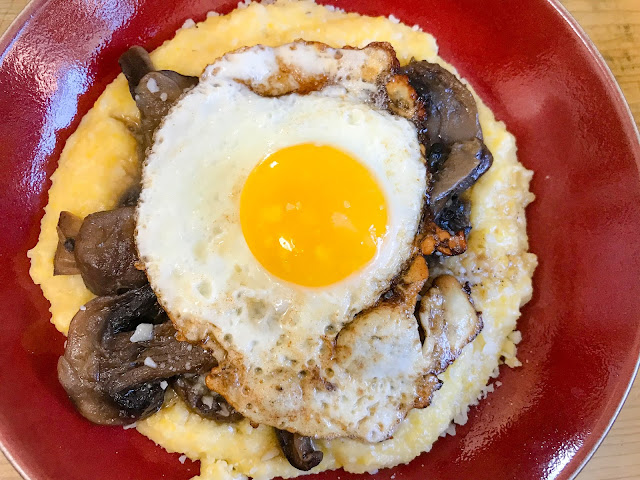 |
| A quick update/addition: The leftovers of this dish made a delicious, cozy brunch when topped with an egg. All kinds of yum! |
Oven-Baked Pearl Barley Pilaf with Chicken and Mushrooms
I found this recipe for Oven-Baked Pearl Barley Pilaf with Chicken and Mushrooms from Olive Magazine out of Carpathia: Food from the heart of Romania by Irina Georgescu, which sounded like a flavorful one-pot meal. I made only a few minor changes, but since the recipe is written for a British audience, I’ve adapted it here using ounces and pounds, etc.
How The Wines Paired
This was a much closer competition between the two wines, although I ultimately preferred the refreshing white wine in this case. I thought the match also helped further round out the mid-palate of the wine and gave it a little more flesh. Greg, on the other hand, forgot to pay attention this round and happily sipped away at the red wine while we watched a movie with dinner. I thought the red was quite nice too, but the tannin fought a bit with the chicken, although in a very minor way.
Servings: 4 to 6

Oven-Baked Pearl Barley Pilaf with Chicken and Mushrooms
Ingredients
- 1 whole chicken, divided into 8 pieces
- 2 onions, sliced
- 8 oz package, pearl barley
- 3 celery sticks, diced
- 1 carrot, diced
- 1 red pepper, diced
- 14 oz can diced tomatoes
- 8 to 10 oz crimini mushrooms, sliced
- 16 oz chicken stock
- 2 Tbsp butter
- flat-leaf parsley a small bunch, roughly chopped (optional)
- Cooking oil
- Salt, 2 tsp or to taste
- Pepper, 1 tsp, or to taste
Instructions
- Preheat the oven to 350°F.
- In a large oven-safe pan or Dutch oven, heat the oil and brown the chicken pieces on all sides until well-browned. Transfer to a plate. In the same oil, cook the onions for 10 minutes over medium heat until they begin to char. Add the pearl barley and coat the grains well with the oil, and cook for a few more minutes.
- Add the chopped tomatoes, mushrooms, stock, season with salt and pepper, and stir gently. Add the dark-skin pieces of chicken back in, then cover the pan.
- Put the Dutch oven in the oven. After 10 to 15 minutes, add the light-skin chicken pieces to the pan. Continue to cook for another 30 to 35 min, then uncover the pot and cook for another 10 minutes or until the barley is tender and most of the liquid has been absorbed. Roughly chop the butter and dot the pieces around over the top.
- Remove the pot from the oven, taste, and adjust seasoning as needed. Sprinkle with parsley, if using, and serve.

